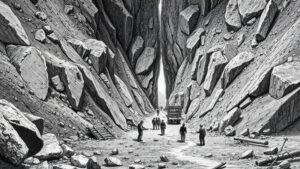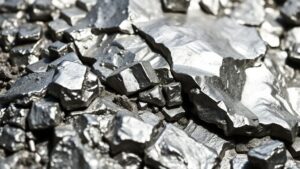Techniques for Reading Natural River Obstructions for Gold Clues
Techniques for Reading Natural River Obstructions for Gold Clues
Exploring river systems for gold can be an exhilarating challenge for prospectors and enthusiasts alike. Natural river obstructions–such as boulders, logs, and changes in water flow–can provide crucial clues about where gold may be deposited. This article outlines effective techniques for interpreting these signs and maximizing the chances of finding gold within fluvial environments.
Understanding River Dynamics
To effectively read natural obstructions, it is vital to understand the basic dynamics of river behavior. Rivers are constantly in motion, and their flow dynamics can change due to various factors, including seasonal weather changes and human activity.
Research indicates that rivers typically exhibit a logarithmic growth model where sediment transport and gold particles can accumulate in low-energy zones. As water moves around obstacles, it slows down, allowing heavier materials, including gold, to settle. Recognizing these patterns is essential for effective prospecting.
Identifying Key Natural Obstructions
Natural obstructions can be classified into several types, each of which can hold clues to gold presence:
- Boulders: Large rocks can create eddies and backflows, trapping sediments.
- Log Jams: Accumulations of logs can significantly alter water flow, providing shelter for gold particles.
- Sandbars: Areas where water slows down can lead to gold deposition.
Each of these features can indicate where gold is likely to be found. It is not uncommon for prospectors to focus on places downstream from these obstructions as they can collect gold that has been released from upstream sources.
Reading Water Behavior
Connecting the observations of river obstructions to water behavior is a crucial technique. When analyzing a river, note how the water flows around a particular obstruction. Areas of swirling or choppy water often indicate turbulence, which is a sign that sediment–including gold–could be settling nearby.
For example, in a 2019 study published in the Journal of Geophysical Research, researchers noted that channelized flows could concentrate gold 15 to 20 percent higher in areas adjacent to large boulders compared to uniform flow environments. This insight shows the significant impact of obstruction on sediment deposition.
Conducting a Field Survey
Equipped with basic tools (a shovel, a sieve, and a gold pan), prospectors can conduct field surveys around the identified obstructions. Here is a process for effective examination:
- Start by sampling: Collect small sediment samples from the upstream, downstream, and beside the obstruction.
- Analyze the pan: Use the gold pan to sift through the sediment and look for flecks of gold.
- Document findings: Keep records of locations, types of obstructions, and gold findings for future reference.
This methodical approach has yielded valuable results for prospectors by refining their strategies based on observed patterns over time.
Utilizing Technology
Modern technology has enhanced the way prospectors can read river obstructions. Tools like drones equipped with cameras can provide aerial views that reveal patterns invisible at ground level. Also, sediment transport models using GIS software can predict areas of potential gold deposition based on historical river flow data.
A case study conducted in Montana demonstrated how aerial surveys combined with GIS modeling led to a 30% increase in gold recovery compared to traditional methods, showcasing the significant advantages of integrating technology into prospecting practices.
Conclusion
Reading natural river obstructions effectively requires a blend of field skills, knowledge of river dynamics, and sometimes the integration of technology. By focusing on identifying key obstructions and understanding water behavior around them, prospectors can significantly enhance their gold-finding efforts.
As you venture into the great outdoors for your next gold prospecting challenge, remember that each natural obstruction presents an opportunity–armed with these techniques, you will be better prepared to uncover treasure hidden in the rivers embrace.

